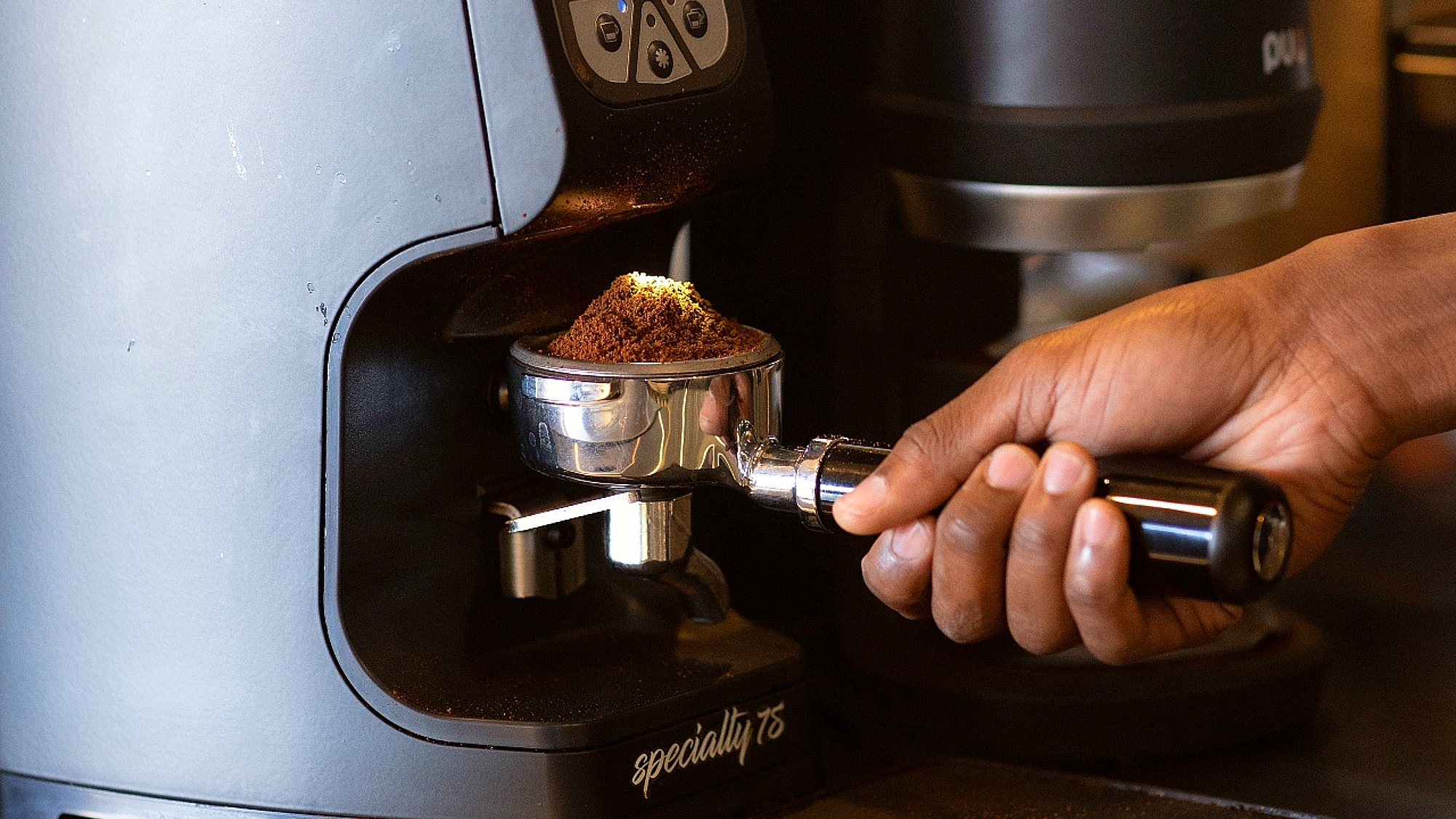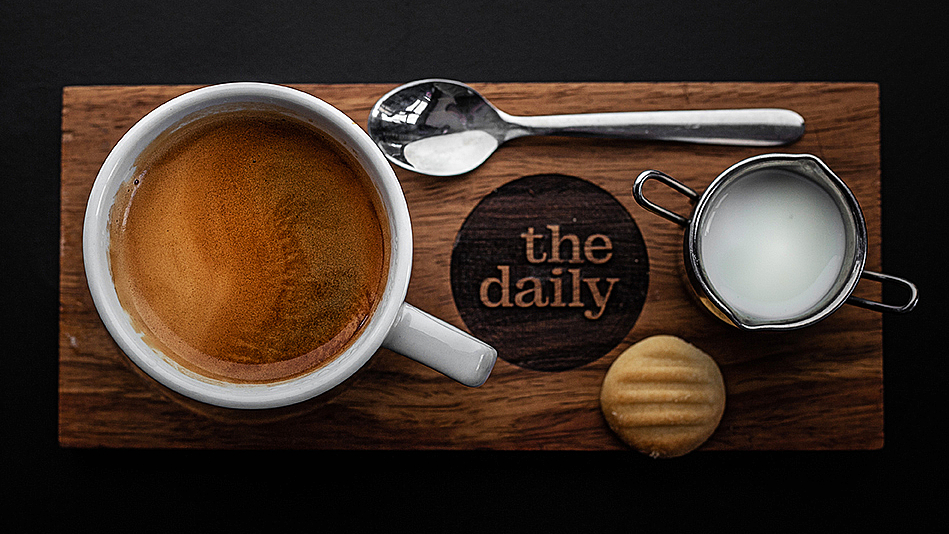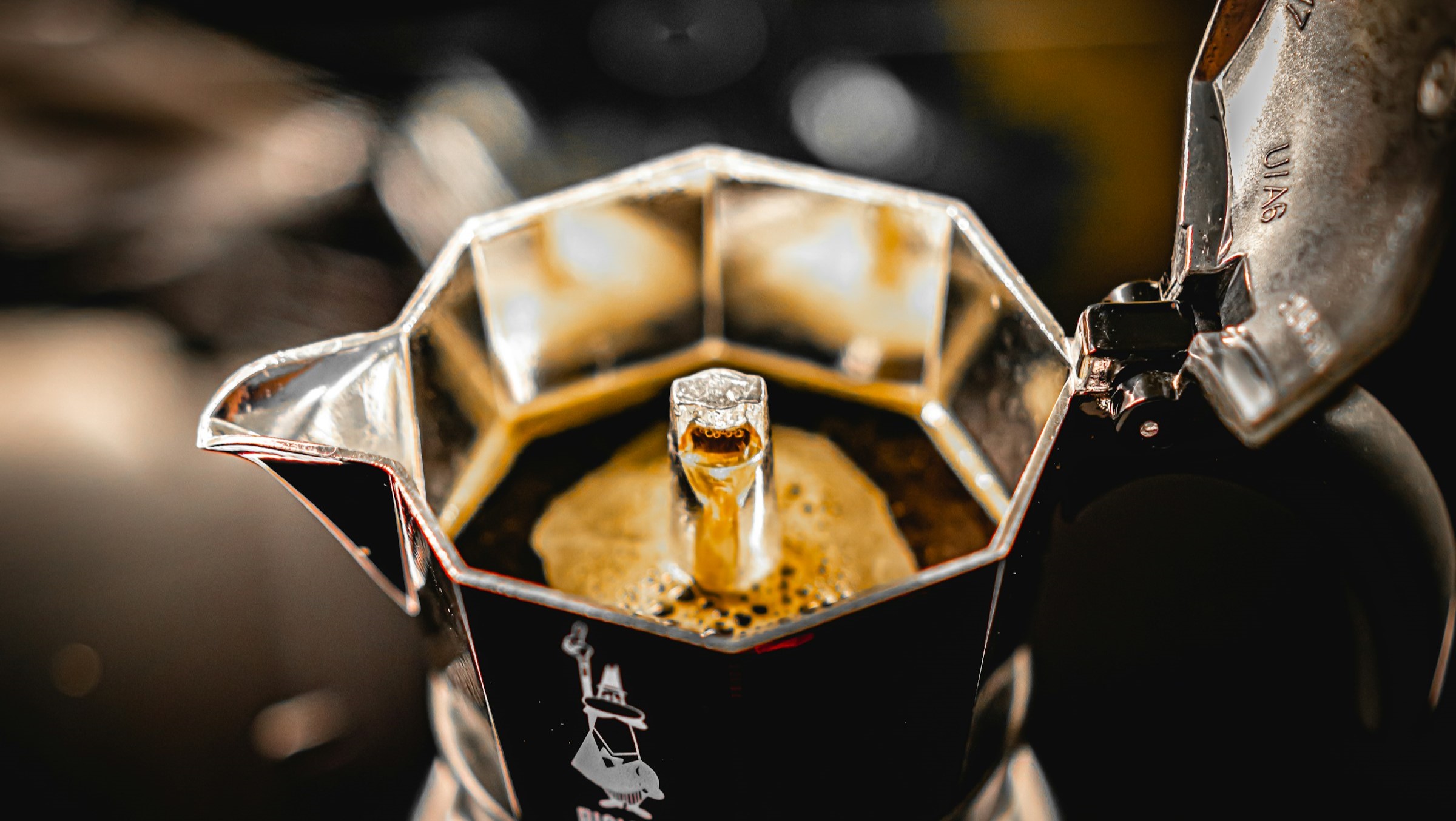The grind guide: Why coffee grind size matters
Because how fine or coarse your coffee is can make or break your brew.
Ever noticed how the same coffee can taste different depending on how it’s made? One of the most common – and most misunderstood – reasons for this is grind size.
In this article in our series “What makes a good cup of coffee?”, we explore how grind size affects your brew. It might sound technical, but we’ll guide you through it in simple terms. Once you understand the basics, you’ll easily see why grind size plays such a crucial role in the flavour of your coffee.
Why grind size even matters
Coffee is all about extraction – how much flavour we pull out of the coffee grounds when they meet water. Grind too fine or too coarse, and you could end up with coffee that’s bitter, sour, or just plain weak.
The goal? A balanced extraction. And that starts with the right grind for your brew method.
Brewing coffee is about more than just hot water and ground beans. It’s about how much flavour you extract when water meets coffee, and your grind size plays a starring role.
Grind too fine, and the water takes too long to pass through, pulling out bitter, harsh, and dry flavours. Grind too coarse, and the water flows too quickly, leaving you with a sour, weak, or watery brew.
- Too fine: Over-extracted, bitter, and astringent
- Too coarse: Under-extracted, sour, and underwhelming
The sweet spot? A perfectly balanced extraction where the flavours are smooth, rich, and satisfying, starting with using the right grind for your brew method, whether you’re using a French press, espresso machine, or pour-over.
Getting the grind right is the first step to a better cup!
Grind size cheat sheet
Here’s a quick guide to which grind size suits which brewing method:
Brew method | Grind size | Feel of the texture |
Espresso | Very fine | Like fine salt or flour |
Moka pot | Fine | Similar to table salt |
Aeropress | Fine-medium | Slightly gritty, like sand |
Pour-over/drip | Medium | Like beach sand |
French press | Coarse | Like sea salt or breadcrumbs |
Cold brew | Extra coarse | Chunky, almost like peppercorns |
The key is to match your grind to your brew time. Faster methods (like espresso) need a finer grind. Slower methods (like French press) work best with coarser grinds.
Why fresh grinding is best
Pre-ground coffee might be convenient, but it comes at a cost – loss of flavour! The moment coffee is ground, it begins to lose its vibrant aroma and rich taste as oxygen and moisture start to break it down. What was once bold and full of character quickly turns flat and uninspiring.
That’s why coffee cafés that take their craft seriously grind fresh for every cup. It’s the only way to capture the true essence of the bean – the full aroma, depth, and personality that make each brew memorable.
Freshly ground means a freshly awakened flavour. Once you’ve tasted the difference, there’s no going back!
Types of grinders for home use
Not all grinders are created equal, and the type of grinder you choose can have a big impact on your coffee. For home use, you’ll typically encounter two main types: Manual and electric grinders.
- Manual grinders
These grinders are often more affordable and portable, but they require a bit more effort. They are great for those who enjoy a hands-on experience and brew coffee in small quantities. While they may not be as fast as electric grinders, they can offer a very consistent grind, especially for French press and Aeropress brewing methods.
- Electric grinders
Faster and more efficient, electric grinders are ideal for those brewing larger quantities or looking for speed and convenience. Burr grinders, commonly found in electric grinders, provide the most consistent grind size and are preferred over blade grinders for their precision. Burr grinders are the go-to choice for serious coffee aficionados and baristas.
Essential! Regular cleaning of your grinder
To keep your coffee tasting its best, it’s important to clean your grinder regularly. Over time, coffee oils and fine coffee particles build up, leading to stale-tasting coffee and less precise grinding. Dirty grinders can also result in inconsistent grinds, which impacts the overall flavour and quality of your brew.
- For burr grinders
Cleaning typically involves brushing out the grinds, disassembling the grinder for a deeper clean, and occasionally running some dry rice through the grinder to remove oils and residue.
- For blade grinders
Simply wiping the blade clean and removing any ground coffee build-up should do the trick.
By keeping your grinder clean, you ensure that each cup of coffee you brew tastes fresh and full of flavour, with no unwanted bitter aftertaste.
Can you tell if the grind is off?
Absolutely! And your taste buds will too!
Once you start tuning in, the signs are unmistakable.
- Bitter, harsh flavours? Your grind is likely too fine which means the water is extracting too much, leaving you with an overdone brew.
- Sour, watery, or weak? Chances are the grind’s too coarse, and the water couldn’t pull out enough flavour.
It’s a bit like cooking pasta – leave it too long and it’s mushy, take it out too early and it’s still raw. The key is balance. And when it comes to coffee, that balance starts with the right grind for your brewing method.
Get it right, and your coffee sings. Get it wrong, and you’ll taste it instantly.
Getting the grind just right
At The Daily Coffee Café, we believe great coffee isn’t just about the beans, it’s also about how we treat them. Every step counts, and that includes grinding them to perfection.
We freshly grind our beans using precision grinders to ensure each shot of espresso is crafted just right. The result? A brew that’s smooth, full of flavour, and perfectly balanced, unlocking the true essence of the coffee without any bitterness or under-extraction.
When the grind is right, your coffee comes to life. And that’s The Daily difference!
Next up
In the next article in our “What Makes a Good Cup of Coffee?” series, we’ll explore the unsung heroes of great coffee – water, temperature, and time. Because good coffee isn’t just about what’s in the cup – it’s also about how it gets there!







